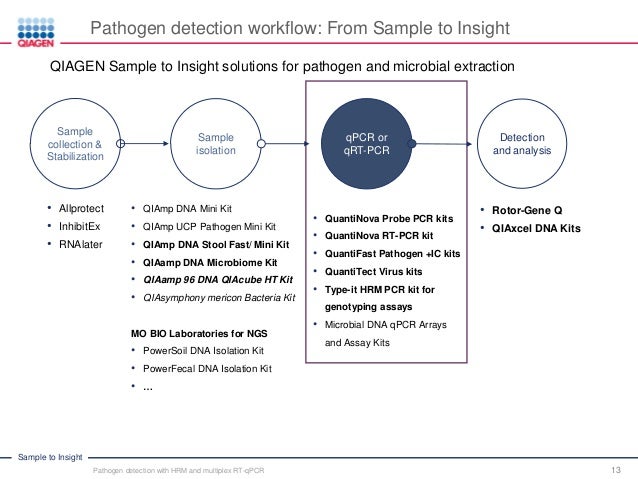Heating/cooling is achieved by rapid airflow in the reaction chamber. Tubes spin past the excitation/detection optics every 150 milliseconds enabling high-speed data capture. The Rotor-Gene Q MDx is an instrument that enables real-time PCR. It is highly suited for in vitro diagnostic applications. The unique rotary format ensures optimal thermal and optical uniformity between samples, which is critical for precise and reliable analysis. With a choice of up to 6 excitation sources and 6 detection filters (the red and HRM channels are not intended for use with FDA cleared or approved nucleic acid tests), combined with a short, fixed optical path, the Rotor-Gene Q MDx can be used for multiplex reactions, ensuring minimum fluorescence variability between samples and eliminating the need for calibration or compensation. . Unique rotary design for outstanding performance The Rotor-Gene Q MDx uses a sophisticated heating and cooling design to achieve optimal reaction conditions. The unique rotary format ensures optimal thermal and optical uniformity between samples, which is critical for precise and reliable analysis (see figure ').


Technical Note Page 1 of 5 QIAGEN Rotor Gene Q: Software V2.0 Instrument Setup Instructions for RT2PCR Profiler™ Arrays Preparation Before the Experiment. Sep 15, 2017 Rotor-Gene Q is a program designed for the QIAGEN Rotor-Gene Q device that enables streamlined analysis for a wide range of applications. Optimal thermal and optical performance due to rotary format; Robust technology, requiring minimal maintenance; Easy-to-use software with advanced security features. The Rotor-Gene Q MDx instrument, with Rotor-Gene Q software version 2.1.0 or higher, is a real-time nucleic acid amplification and detection system,. Rotor-Gene Q (Rotor-Gene.exe). Rotor-Gene Q is a program designed for the QIAGEN Rotor-Gene Q device that enables streamlined analysis for a wide range of applications.
Each tube spins in a chamber of moving air, keeping all samples at precisely the same temperature during rapid thermal cycling. Detection is similarly uniform. When each tube aligns with the detection optics, the sample is illuminated and the fluorescent signal is rapidly collected from a single, short optical pathway. This thermal and optical uniformity results in sensitive, precise, and fast real-time PCR analysis. Robust optics for multiplex applications With a choice of up to 6 excitation sources and 6 detection filters (the red and HRM channels are not intended for use with FDA cleared or approved nucleic acid tests), combined with a short, fixed optical path, the Rotor-Gene Q MDx can be used for multiplex reactions, ensuring minimum fluorescence variability between samples and eliminating the need for calibration or compensation.
Bohemian Rhapsody Sax Quartet Pdf Reader. Samples are excited from the bottom of the chamber by a light-emitting diode (see figure '). Energy is transmitted through the thin walls at the base of the tube. Vega Mandolin Banjo Serial Numbers. Emitted fluorescence passes through emission filters on the side of the chamber and is then collected by a photomultiplier. The fixed optical path ensures consistent excitation for every sample, which means that there is no need to use a passive internal reference dye such as ROX.
Channels for optical detection Channel Excitation (nm) Detection (nm) Green 470 ± 10 510 ± 5 Yellow 530 ± 5 557 ± 5 Orange 585 ± 5 610 ± 5 Red* 625 ± 5 660 ± 10 Crimson 680 ± 5 712 high pass HRM* 460 ± 20 510 ± 5 * The red and HRM channels are not intended for use with FDA cleared or approved nucleic acid tests. Spam Reader Serial Number. Minimum maintenance; maximum convenience The Rotor-Gene Q MDx is engineered to reduce the need for maintenance, and to maximize ease of use. This saves time and costs, and keeps the instrument operational for continuous testing. Convenient features of the Rotor-Gene Q MDx include: •.